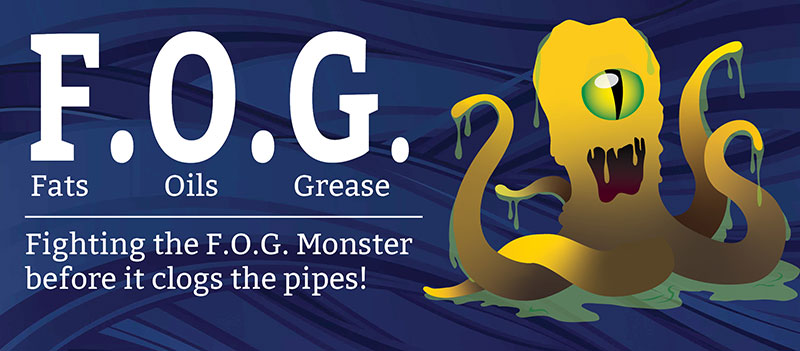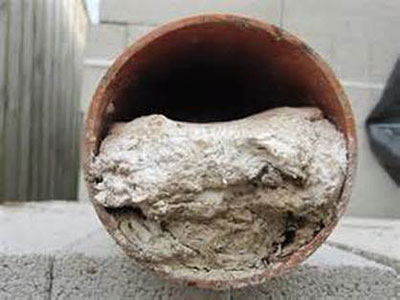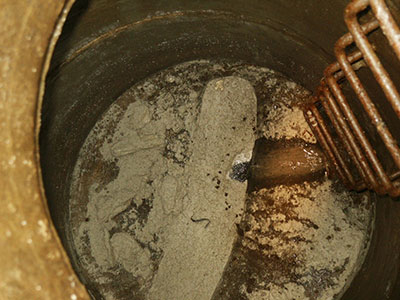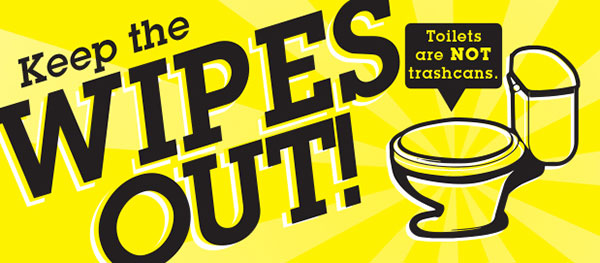Water Environment Services
Keep F.O.G. out of your pipes!

Fats, oils and grease (FOG) are found in common foods and food ingredients such as meat, fish, butter, cooking oil, mayonnaise, milk, gravies, sauces and food scraps. If poured down the sink drain or into your garbage disposal, FOG could build up over time by sticking to the sides of sewer pipes. This could eventually cause an expensive sewer backup into your home or the public wastewater system. The results of a grease-blocked sewer pipe can be:
- Sewage overflows in your home or your neighbor's home causing expensive and unpleasant cleanup that often must be paid for by the property owner.
- Sewage overflows to streets or landscaping that can get into streams and rivers causing possible contact with disease-causing organisms.
- An increase in operation and maintenance costs for the public sewer system and the treatment facilities, which could lead to higher sewer rates for customers.


By following a few simple steps, you can help prevent sewer backups by:
- Pouring cooled fats, oils and grease into a covered, disposable container and tossing it into your garbage instead of down sink drains.
- Soaking up remaining FOG with paper towels and placing in the trash.
- Scraping food scraps into your compost or trash before washing dishes.
- Using sink strainers to catch any remaining food waste while washing dishes.
Keep the Wipes Out

Keep the Wipes Out
Disposable wipes are convenient and save time, until they cause inconvenient and costly plumbing issues in your home and our sanitary sewer system due to clogged pipes and sewage backups. When deciding what to flush down the toilet, it’s safest to stick to the three P’s: pee, poo and toilet paper.
The problem with most wipes is that they will not disintegrate in water, so they damage pumps, pipes and other equipment throughout the collection system and at the wastewater facilities, resulting in maintenance headaches.
Some wipes also contain plastic in their weave, and when they get a little beat up, they release microplastics that the treatment process will not remove. Those microplastics can be harmful to fish and other aquatic life.
Legislation labeling and product advancements are making products safer to use.
In 2021, Oregon became the second state to require “Do Not Flush” labeling on disposable wipes. Manufacturers who manufacture covered products, or wholesalers, suppliers, or retailers responsible for labeling or packaging the covered products, are subject to Oregon’s requirement. Covered products include premoistened nonwoven disposable wipe marketed as a baby wipe or diapering wipe; premoistened nonwoven disposable wipe that is composed entirely of or in part of petrochemical derived fibers, and that are likely to be used in a bathroom and has a significant potential to be flushed.
The industry is changing, and product advancements include some wipes that actually do break down. This is good news for the environment – and as environmental stewards we are thrilled. While some newer wipes break down, most wipes are quite strong and can take 100 years to decompose in the landfill. Hopefully advancements continue and the wipes industry moves in the right direction towards 100% fully compostable wipes. In the meantime, wipes of all kinds are best to be trashed and never flushed.
 Translate
Translate





